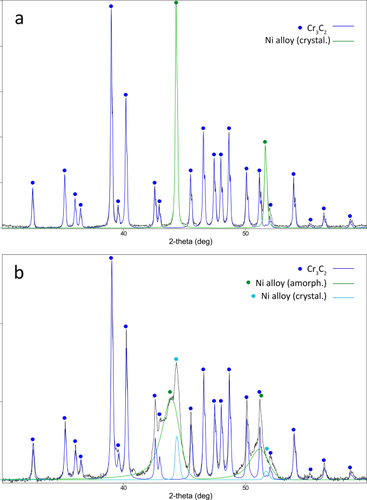Comparison of Microwave Versus Conventional Furnace Heat Treatments of Carbide Composite Thermal Spray Coatings
Abstract
Thermal spraying has become an industrial standard in the production of wear-resistant WC-Co and Cr3C2-NiCr composite coatings. However, generating optimum wear-resistant nano-reinforced carbide microstructures within the coatings remains challenging. The alternative two-step approach in this work involves coating formation under high energy conditions to generate maximum carbide dissolution, followed by heat treatment to precipitate nanocarbides. Microwave heating of particulate materials has been reported to offer several benefits over conventional furnace heating, including faster heating rates, internal rather than external heating, and acceleration of reactions/phase transformations at lower temperatures. This novel work explored the use of microwaves for heat treatment (as distinct from melting) of WC-Co and Cr3C2-NiCr thermal spray coatings and contrasted the rate of phase development with that from conventional furnace treatment. Coatings were successfully microwave heat-treated to generate the same phase composition as furnace treatment. Both treatments generated comparable results in the Cr3C2-NiCr system. The WC-Co system achieved a much more crystalline structure in a dramatically shorter time relative to the conventional furnace-treated sample. The results are contrasted as a function of material and microstructure interaction with microwaves and the critical phase transition temperatures to account for the observed responses.


 求助内容:
求助内容: 应助结果提醒方式:
应助结果提醒方式:


